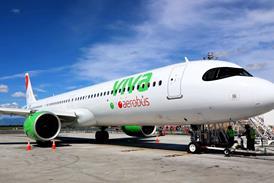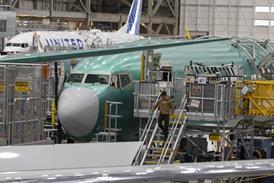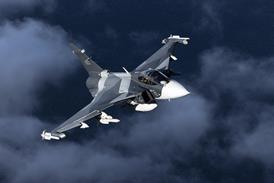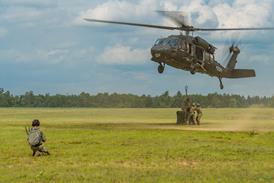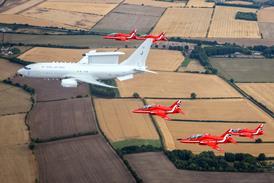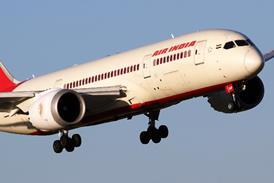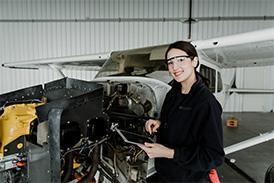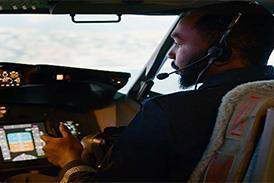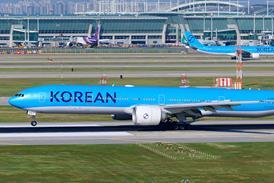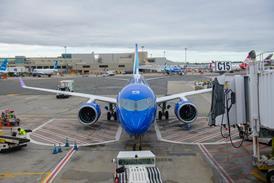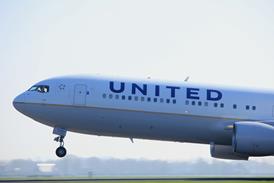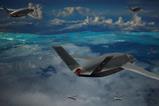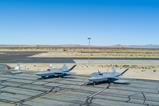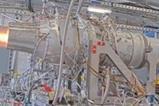Swedish airframer Saab is working to develop a solution for production of the company’s latest Gripen E/F fighter in Canada.
In a recent interview with the Financial Times, Saab chief executive Micael Johansson said the company is looking at options to expand Gripen assembly capacity, which could include a new site in Canada and expansion of existing Gripen lines in Brazil and Sweden.
The move was prompted by interest from Ukraine, which in October signed a letter of intent with Saab covering the possible purchase of up to 150 Gripens.

The suggestion of an assembly plant in Canada is no doubt a strategic play meant to entice the government of Prime Minister mark Carney in Ottawa.
Carney is weighing whether to maintain commitments made by his predecessor to acquire 88 Lockheed Martin F-35A stealth fighters, or to truncate that purchase and supplement it by adding a second aircraft type to the Royal Canadian Air Force inventory.
At issue is concern Canada will rely too heavily on Washington for defence materiel, and Canada’s desire to diversify toward European suppliers or to expand domestic capability.
Canada is already contractually obligated to field its first 16 F-35As, but could reduce the total fleet size and make up the difference with another type like the Gripen E/F or Dassault Aviation Rafale.
While a local Gripen production deal could sweeten an offering from Lockheed’s Swedish competitor, a Saab substitution faces significant headwinds.
The non-stealth Gripen E/F costs more than the F-35A, owing to Lockheed’s more mature design and greater production volume of 156 aircraft annually.
While the Gripen does offer generally lower operating costs, it is not viewed as an equal substitute for the fifth-generation combat capability of the F-35, which 13 of Canada’s NATO allies have committed to fielding.
Canada was also one of the eight founding members of the multinational F-35 programme.
While domestic production of an F-35 alternative may prove alluring, some Canadian manufacturers would likely take a hit.
At least 30 Canadian companies supply the F-35 programme, according to reporting by Canadian broadcaster the CBC. Some 2,000 domestic workers are employed supporting those efforts.
French manufacturer Stelia contributes composite fuselage panels made in Nova Scotia, the CBC reports, while the F-35’s horizontal tail stabilisers are produced in Winnipeg, and a company in Ottawa provides engine sensors.
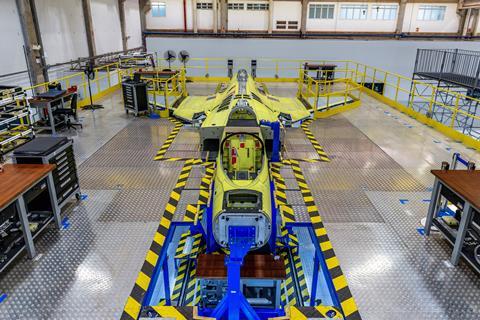
The full acquisition of 88 F-35 jets is projected to contribute some C$15 billion ($11 billion) to the Canadian economy.
Senior Canadian defence officials have publicly supported the modernisation effort to replace the RCAF’s aged fleet of Boeing F/A-18A Hornet fourth-generation jets, which are Canada’s frontline combat fighters.
Even if Canada declines to purchase Gripens, the country could become home to a site producing Ukraine-bound Gripens.
The Canadian Press reports that Canadian industry minister Melanie Joly has spoken with Saab’s Johansson about expanding the Swedish company’s presence in Canada.
“We see eye to eye when it comes to our position on Europe’s security and Ukraine, and we see eye to eye on the importance of our aerospace sector, and so I think there’s a great partnership between Canada and Sweden that we can further,” Joly said at October’s Canadian Aerospace Summit in Ottawa.
Saab has declined to reveal with whom it is speaking about potential local Gripen partnerships or where it might be looking.
In Brazil, Saab partnered with Brazilian airframer Embraer to assemble Gripen E/Fs for the Brazilian Air Force, which was launch customer for the type – operated locally as F-39E/Fs.
A likely Canadian partner could be aircraft manufacturer Bombardier, which already provides Global 6000 business jets for Saab’s GlobalEye airborne early warning and control platform.


